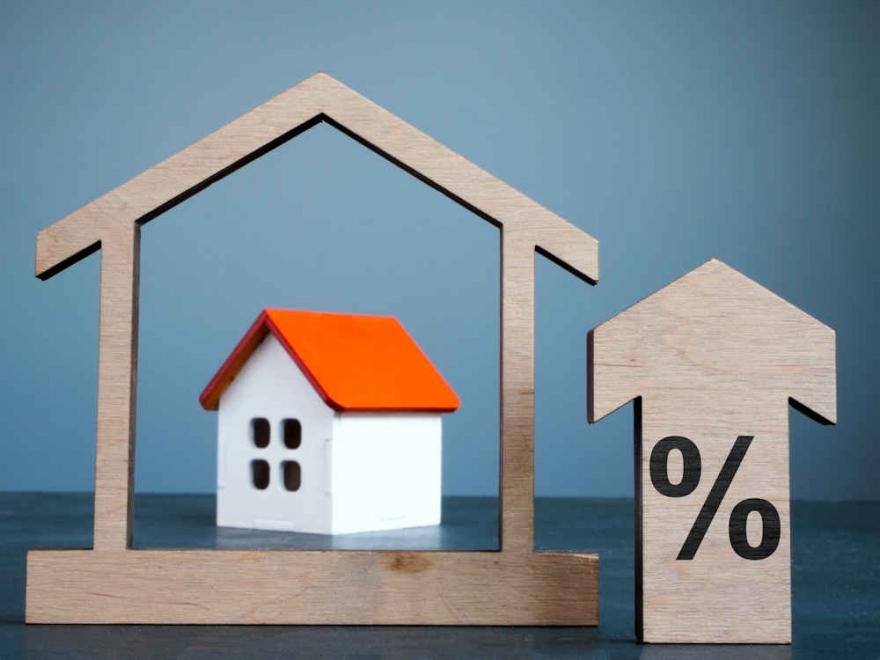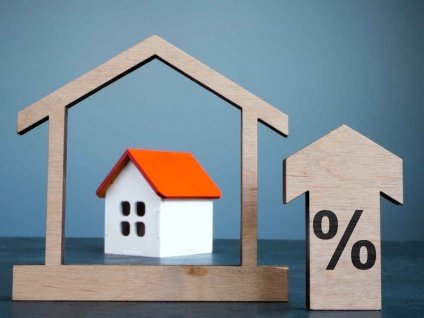NAR forecasts 4.46 million existing-home sales in 2024, a 9% increase from 2023
Pending home sales in March climbed 3.4%, according to the National Association of Realtors®. The Northeast, South and West posted monthly gains in transactions while the Midwest recorded a loss. Year-over-year, the Northeast and South registered decreases but the Midwest and West improved.
The Pending Home Sales Index (PHSI)* – a forward-looking indicator of home sales based on contract signings – increased to 78.2 in March. Year over year, pending transactions were up 0.1%. An index of 100 is equal to the level of contract activity in 2001.
“March’s Pending Home Sales Index – at 78.2 – marks the best performance in a year, but it still remains in a fairly narrow range over the last 12 months without a measurable breakout,” said NAR Chief Economist Lawrence Yun. “Meaningful gains will only occur with declining mortgage rates and rising inventory.”
Quarterly U.S. Economic Forecast
NAR forecasts that existing-home sales will rise by 9% in 2024 to 4.46 million (from 4.09 million 2023) and another 13.2% in 2025 to 5.05 million (from 2024). Housing starts are expected to rise by 1.2% in 2024 to 1.43 million (from 1.413 million in 2023) and 4.9% to 1.5 million in 2025 (from 2024).
“Home sales have lingered at 30-year lows, and since 70 million more Americans live in the country now compared to three decades ago, it’s inevitable that sales will rise in coming years,” explained Yun. “Inventory will grow steadily from more home construction, and various life-changing events will require people to trade up, trade down or move to another location.”
NAR expects that median home prices will increase by 1.8% in 2024 to a record of $396,800 (from $389,800 in 2023) and another 1.8% in 2025 to $403,800 (from 2024). NAR forecasts a modest reduction – 0.6% – in the median new home price to $426,100 in 2024 (from $428,600 in 2023), reflecting the building of smaller-sized homes. The association anticipates the median new home price will jump 3.4% to $440,500 in 2025 (from 2024).
“Home prices are expected to rise roughly in line with consumer price inflation and wage growth over the next two years,” added Yun. “Most homeowners are on strong financial footing in current market conditions, with only 2% of sales classified as being distressed.”
NAR expects home sales to steadily improve while home prices continue to hit record highs.
“Job gains, steady mortgage rates and the release of inventory from pent-up home sellers will lead to more sales,” explained Yun. “Given the lingering housing shortage, home prices will march higher, albeit much more slowly than in the past.”
Pending Home Sales Regional Breakdown
The Northeast PHSI increased 2.7% from last month to 65.1, a decline of 0.3% from March 2023. The Midwest index fell 4.3% to 78.1 in March, up 1.3% from one year ago.
The South PHSI improved 7.0% to 95.8 in March, dropping 1.5% from the prior year. The West index rose 6.8% in March to 61.0, up 3.6% from March 2023.
“Home prices rising faster than income growth is not healthy and adds challenges for first-time buyers,” said Yun.
Yun further noted, “Inventory will gradually rise from recent growth in home building. Additionally, many sellers who delayed listing in the past two years will start putting their homes on the market to move to a different home that better fits their new life circumstances – such as changes in family composition, jobs, commuting patterns and retirees wanting to be closer to their grandkids.”
About the National Association of Realtors®
The National Association of Realtors® is America’s largest trade association, representing 1.5 million members involved in all aspects of the residential and commercial real estate industries. The term Realtor® is a registered collective membership mark that identifies a real estate professional who is a member of the National Association of Realtors® and subscribes to its strict Code of Ethics.
# # #
*The Pending Home Sales Index is a leading indicator for the housing sector, based on pending sales of existing homes. A sale is listed as pending when the contract has been signed but the transaction has not closed, though the sale usually is finalized within one or two months of signing.
Pending contracts are good early indicators of upcoming sales closings. However, the amount of time between pending contracts and completed sales is not identical for all home sales. Variations in the length of the process from pending contract to closed sale can be caused by issues such as buyer difficulties with obtaining mortgage financing, home inspection problems, or appraisal issues.
The index is based on a sample that covers about 40% of multiple listing service data each month. In developing the model for the index, it was demonstrated that the level of monthly sales-contract activity parallels the level of closed existing-home sales in the following two months.
An index of 100 is equal to the average level of contract activity during 2001, which was the first year to be examined. By coincidence, the volume of existing-home sales in 2001 fell within the range of 5.0 to 5.5 million, which is considered normal for the current U.S. population.
NOTE: Existing-Home Sales for April will be released May 22. The next Pending Home Sales Index will be released May 30. All release times are 10 a.m. Eastern. View the NAR Statistical News Release Schedule.
Redfin reports many U.S. homeowners wouldn’t be able to afford to buy their home if they were to purchase it today because home prices have doubled over the last decade, and monthly housing costs are at an all-time high
Nearly two of every five (38%) homeowners don’t believe they could afford to buy their own home if they were purchasing it today, according to a new report from Redfin (redfin.com), the technology-powered real estate brokerage.
This is based on a Redfin-commissioned survey of roughly 3,000 U.S. residents conducted by Qualtrics in February 2024.
Nearly three in five (59%) homeowners who answered this question have lived in their home for at least 10 years, and another 21% have lived in their home for at least five years. That means the majority of respondents have seen housing prices in their neighborhood skyrocket since they purchased their home: The median U.S. home-sale price has doubled in the last 10 years, and has shot up nearly 50% in the last five years alone.
Home prices have soared over the last decade for several reasons. Already-high home prices skyrocketed during the pandemic, when remote work and ultra-low mortgage rates motivated many Americans to move and buy homes. Even before the pandemic buying boom, home prices were increasing due to a prolonged supply shortage, along with a strong labor market and growing population pushing up demand.
Rising mortgage rates are another reason many homeowners couldn’t afford their own home if they were to buy it today. The typical person purchasing today’s median-priced home for about $420,000 has a record-high $2,864 monthly housing payment with a 7.1% mortgage rate, the current 30-year fixed-rate average. If they were to purchase a home for the same price with a 4% mortgage rate, which was common in 2019, their monthly payment would be $2,210, roughly $650 less.
“Rising home prices are a double-edged sword. On the one hand, Americans who already own homes benefit from rising values and they can consider themselves lucky they broke into the housing market while they could still afford it,” said Redfin Senior Economist Elijah de la Campa. “On the other hand, price appreciation makes the prospect of buying a new home daunting or even impossible for many people who want to move. Prices have risen enough that a similar home and location would be much pricier than a home someone already owns–even accounting for inflation. Add elevated mortgage rates to the equation, and moving up to a bigger, better home is even more costly and perhaps out of reach.”
The situation is especially dire for first-time buyers, who haven’t built up equity from the sale of a previous home. Nearly 40% of U.S. renters don’t believe they’ll ever own a home, up from 27% last year. Of the Gen Zers and millennials who do expect to buy their first home soon, more than one-third (36%) expect to use a cash gift from family to help with their down payment.
Baby boomers least likely to be able to afford to buy their own home today
Broken down by generation, baby boomers are least likely to be able to afford their current home if they were to buy it today. Nearly half (45%) of baby boomers said they couldn’t afford a similar home in their neighborhood now, compared to 39% of Gen Xers and 24% of Gen Zers and millennials. That stands to reason, as baby boomers are more likely to have bought their home a long time ago for a much lower price. That dynamic contributes to the shortage of homes for sale: Empty-nest baby boomers own twice as many large homes nationwide as millennials with kids, largely because older Americans, with no financial incentive to sell, are hanging onto their homes.
Unsurprisingly, lower-income homeowners are least likely to be able to afford their own home today. More than half (51%) of respondents earning under $50,000 annually wouldn’t be able to afford their home, compared to 34% of people earning $50,000-$100,000 and 21% of people earning more than $100,000.
To view the full report, including a chart and more details on methodology, please visit:
https://www.redfin.com/news/survey-homeowners-afford-own-home

From buying and selling advice for consumers to money-making tips for Agents, our content, updated daily, has made Realty Times® a must-read, and see, for anyone involved in Real Estate.

















